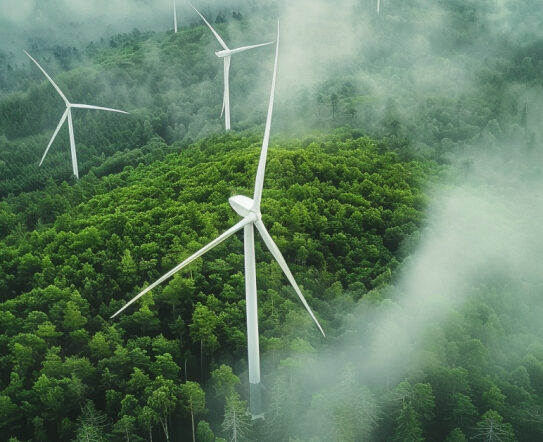Markets
Market Growth
With the “EU Green Deal”, similar legislation and commitments around the globe, carbon fibre has become an essential and enabling key technology for achieving our climate targets. This drives unprecedented opportunities with a compounding effect from legacy structural and additional secular growth.
Structural Growth:
Baseline carbon fibre applications (aerospace, automotive, sporting goods, industry etc.) are predicted to grow at their long-term average.
Secular Growth:
Applications linked to achieving climate objectives include future Aviation, Green Hydrogen, Wind and Construction are projected to grow at 2-3x the industry baseline rate.
Aviation

The future of aviation is sustainable. Propulsion technologies like Sustainable Aviation Fuel (SAF), green hydrogen, and renewable electricity are leading the way.
Carbon fibre composites are essential to achieving the required step change of lightweighting in aircraft, reducing operating costs and opening new markets for autonomous flight.
We collaborate closely with our customers, starting with their future airframe concept and working backwards to develop the most effective carbon fibre solutions that meet their engineering and economic needs.
Green Hydrogen

Green hydrogen is a crucial component of our future energy and materials economies. Produced from renewable sources, it is essential for industries such as chemicals, manufacturing, and sustainable transportation.
Carbon fibre hydrogen pressure vessels are indispensable for Fuel Cell Electric Vehicles (FCEVs, e.g. heavy-duty trucks), hydrogen storage and transportation infrastructure. These vessels place stringent demands on carbon fibre properties, design, engineering and processing, making CAION’s innovative and scalable solutions even more valuable.
Wind

Wind power is rapidly replacing fossil fuels. The economics of wind energy are directly tied to rotor blade size, which has reached impressive lengths of 150 meters.
Carbon fibre spar caps are essential for building and operating these large blades efficiently. By industrializing carbon fibre production, we can significantly scale wind energy capacity while reducing costs. CAION’s solutions are key to achieving this goal.
Construction

Concrete accounts for 8% of global CO₂ emissions, making it the largest contributor to climate change. Carbon fibre composite rebar can reduce CO₂ emissions by up to 70% when used instead of traditional steel-reinforced concrete.
This sustainable solution offers additional benefits, including easier construction, faster deployment, longer lifespan, and improved design flexibility. CAION provides the business case and technology needed to scale up carbon fibre production and integrate it into the construction industry.
